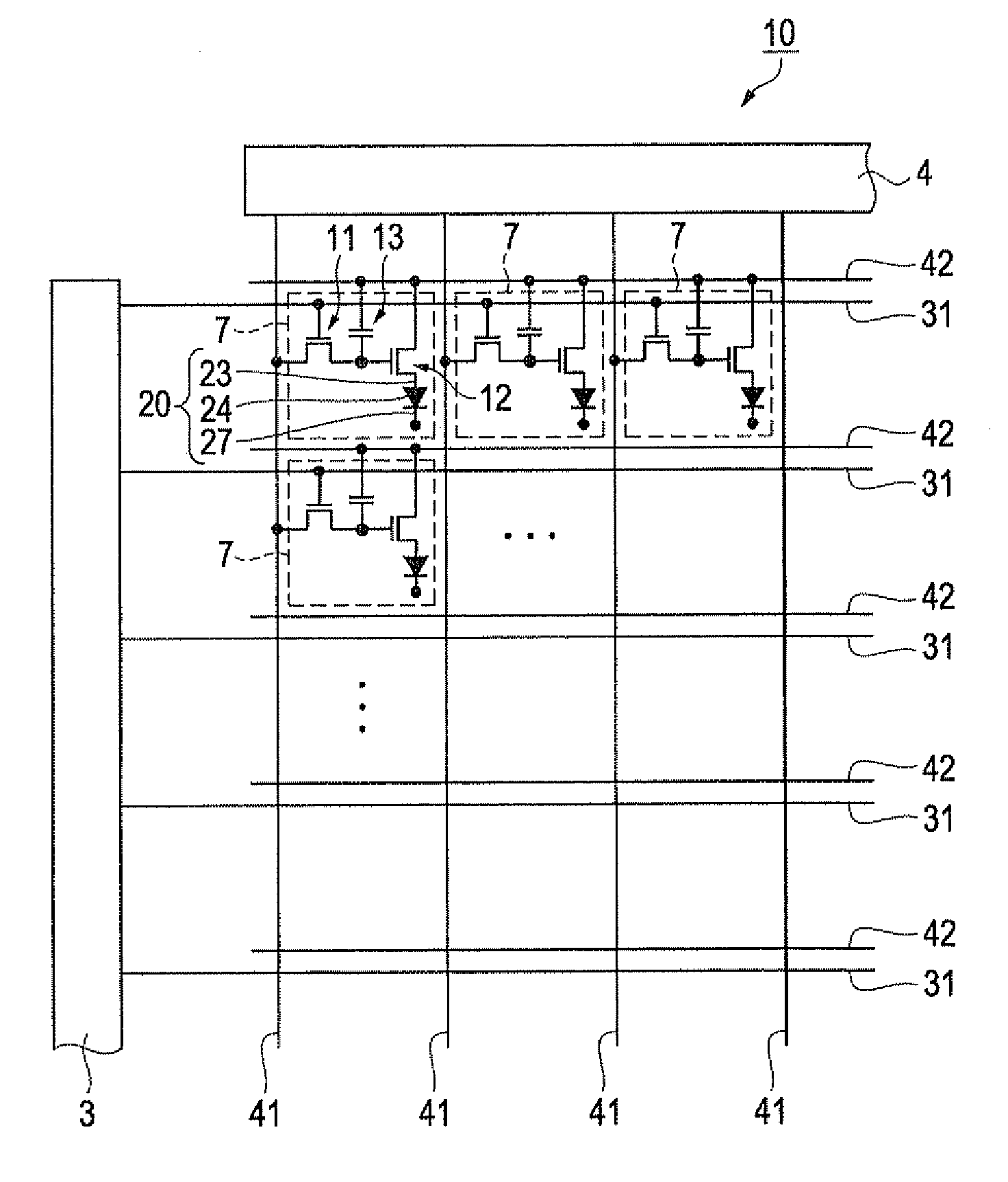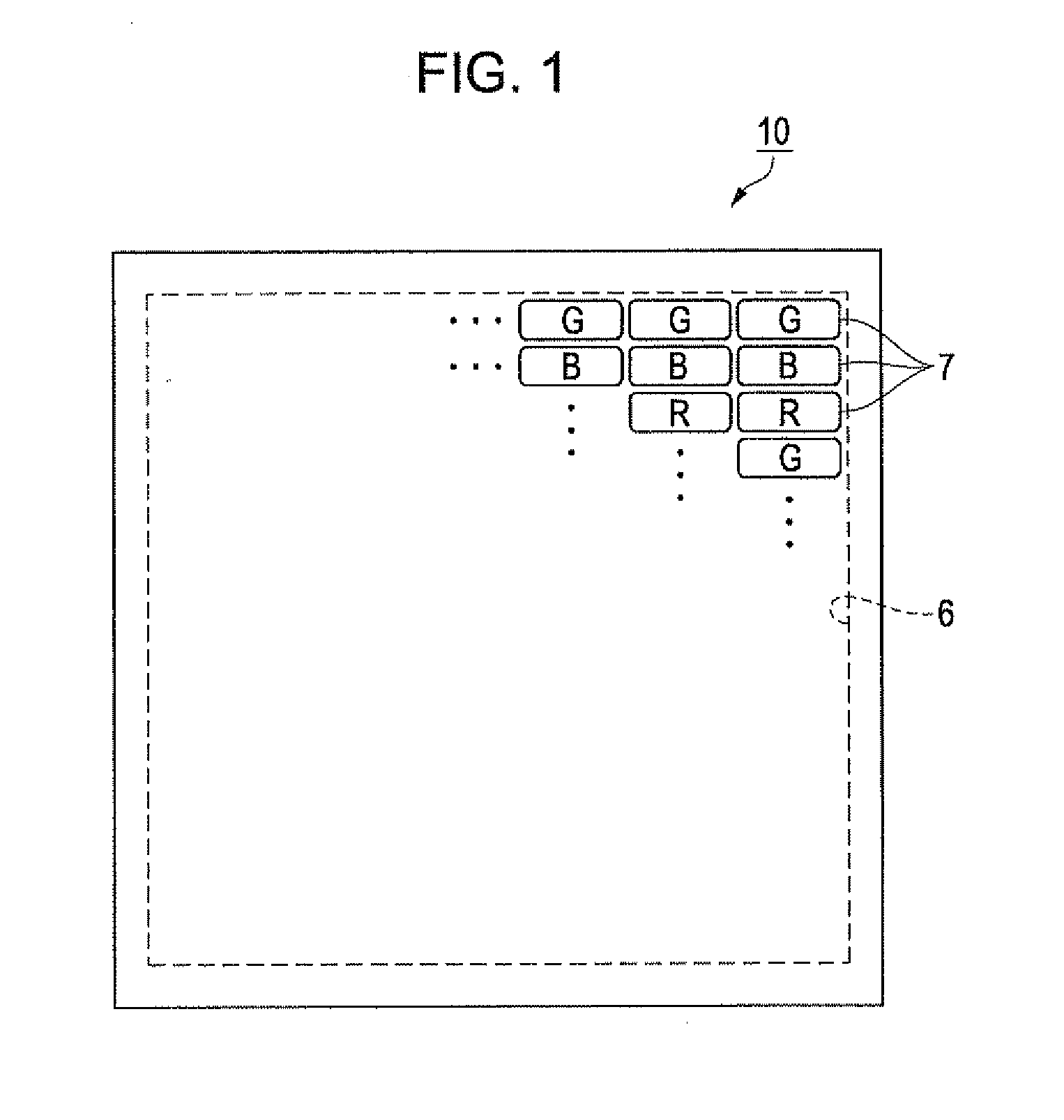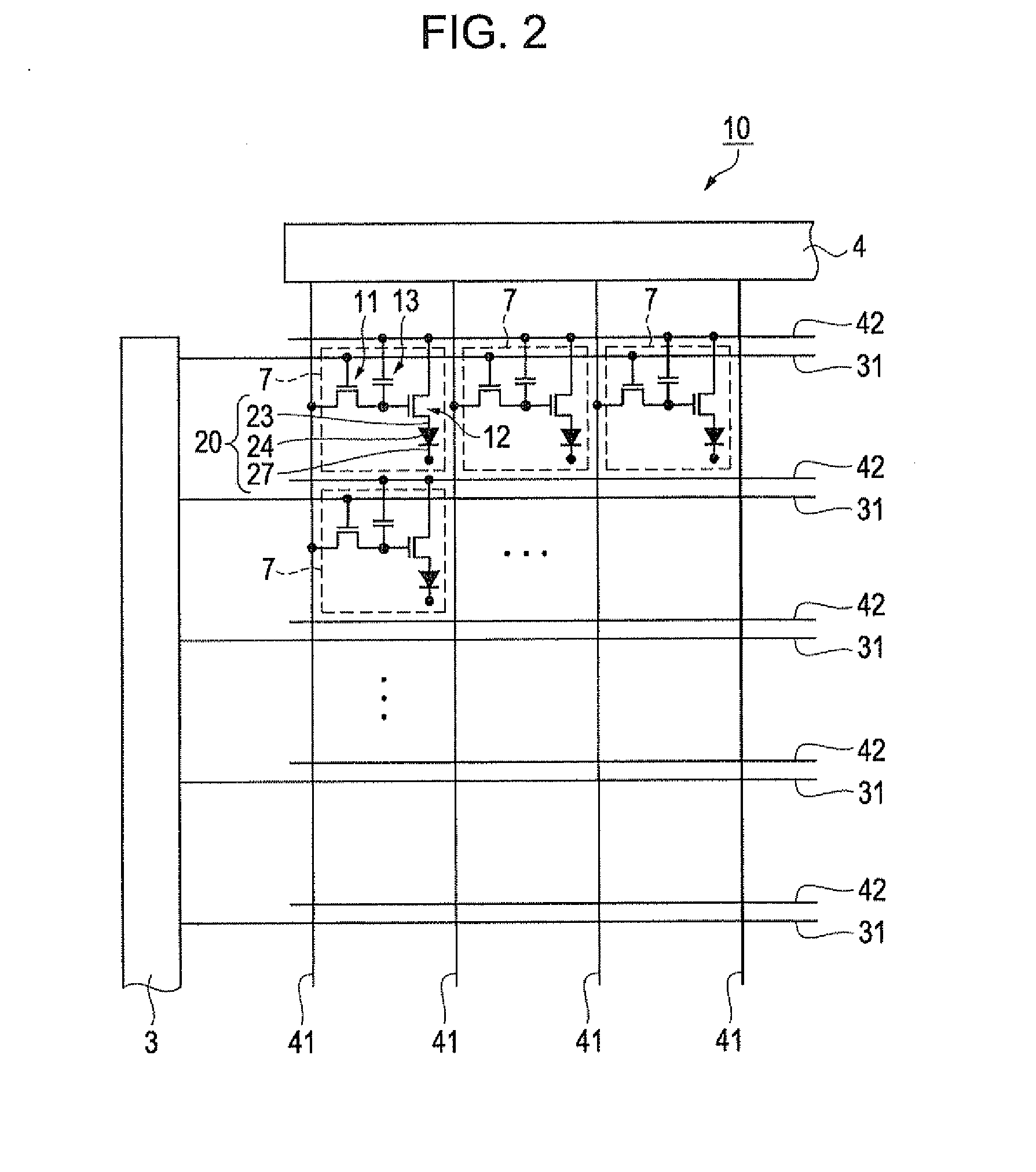Organic electroluminescent device, method for producing organic electroluminescent device, and electronic apparatus
a technology of electroluminescent devices and electroluminescent devices, which is applied in the manufacture of electrode systems, electric discharge tubes/lamps, instruments, etc., can solve the problems of uneven film thickness after drying, and achieve the effect of reducing thickness variations, improving design flexibility of hold capacitors corresponding to at least three organic el elements, and high surface flatness
- Summary
- Abstract
- Description
- Claims
- Application Information
AI Technical Summary
Benefits of technology
Problems solved by technology
Method used
Image
Examples
first embodiment
Organic EL Device
[0075]First, an organic EL device according to this embodiment will be described with reference to FIGS. 1 to 7. FIG. 1 is a schematic plan view of the organic EL device. FIG. 2 is an equivalent circuit diagram of the organic EL device. FIG. 3 is a schematic plan view showing the structure of light-emitting pixels. FIG. 4 is a plan view showing the detailed structure of the light-emitting pixels. FIG. 5 is a sectional view taken along line V-V of FIG. 4, showing the structure of the light-emitting pixels. FIG. 6 is a plan view showing the structure of light-emitting pixels in an organic EL device serving as a comparative example. FIG. 7 is a sectional view taken along line VII-VII of FIG. 6, showing the structure of the light-emitting pixels in the comparative example.
[0076]Referring to FIG. 1, an organic EL device 10 according to this embodiment has light-emitting pixels 7 that emit red (R), green (G), and blue (B) light (emission colors). The light-emitting pixels...
second embodiment
[0146]Next, an organic EL device according to a second embodiment of the invention will be described with reference to FIG. 11. FIG. 11 is a schematic diagram showing the pixel structure of the organic EL device according to the second embodiment. The same portions as those of the organic EL device 10 according to the first embodiment are denoted by the same reference numerals.
[0147]Referring to FIG. 11, an organic EL device 40 according to this embodiment includes scan lines 31 and data lines 41 arranged in a grid pattern and insulated from each other and power lines 42 disposed along the individual scan lines 31. The organic EL device 40 has emission control units Lu in regions defined by the scan lines 31 and the data lines 41. That is, the structure and arrangement of the emission control units Lu are the same as those of the organic EL device 10.
[0148]Depending on steps (level or state of surface irregularities) over the drive circuit sections formed on the substrate, each regi...
third embodiment
[0155]Next, organic EL devices serving as first to fourth examples of a third embodiment of the invention and methods for producing the organic EL devices will be described. The same portions as those of the organic EL device 10 according to the first embodiment are denoted by the same reference numerals.
PUM
 Login to View More
Login to View More Abstract
Description
Claims
Application Information
 Login to View More
Login to View More - R&D
- Intellectual Property
- Life Sciences
- Materials
- Tech Scout
- Unparalleled Data Quality
- Higher Quality Content
- 60% Fewer Hallucinations
Browse by: Latest US Patents, China's latest patents, Technical Efficacy Thesaurus, Application Domain, Technology Topic, Popular Technical Reports.
© 2025 PatSnap. All rights reserved.Legal|Privacy policy|Modern Slavery Act Transparency Statement|Sitemap|About US| Contact US: help@patsnap.com



